When it comes to playing Doom Metal, the right fuzz pedal can make all the difference. From budget-friendly options to standard favorites and boutique gems, there's a vast array of pedals out there, each offering its unique flavor of fuzz. In this guide, we'll explore a selection of fuzz pedals that stand out in the doom metal scene, discussing their features, tonal qualities, and how they can shape your sound.
March 2024 Update:
Since this article's original creation I've been trying more fuzz pedals (especially on the boutique front) on my never ending quest to find my "perfect tone". I've also been playing live more and gained more experience with settings, and wanted to edit this article to reflect my experiences with new doom pedals as well as how I'm setting them these days.
Understanding and Crafting the Perfect Doom Metal Tone
In the realm of Doom Metal, the tone is not just a component of the music—it's the very essence that defines it. The heavy, slow, and powerful sound of Doom Metal is a sonic signature that sets it apart from other genres. But how does one craft this unique style of metal music? Let's explore the elements that contribute to the perfect Doom Metal tone.
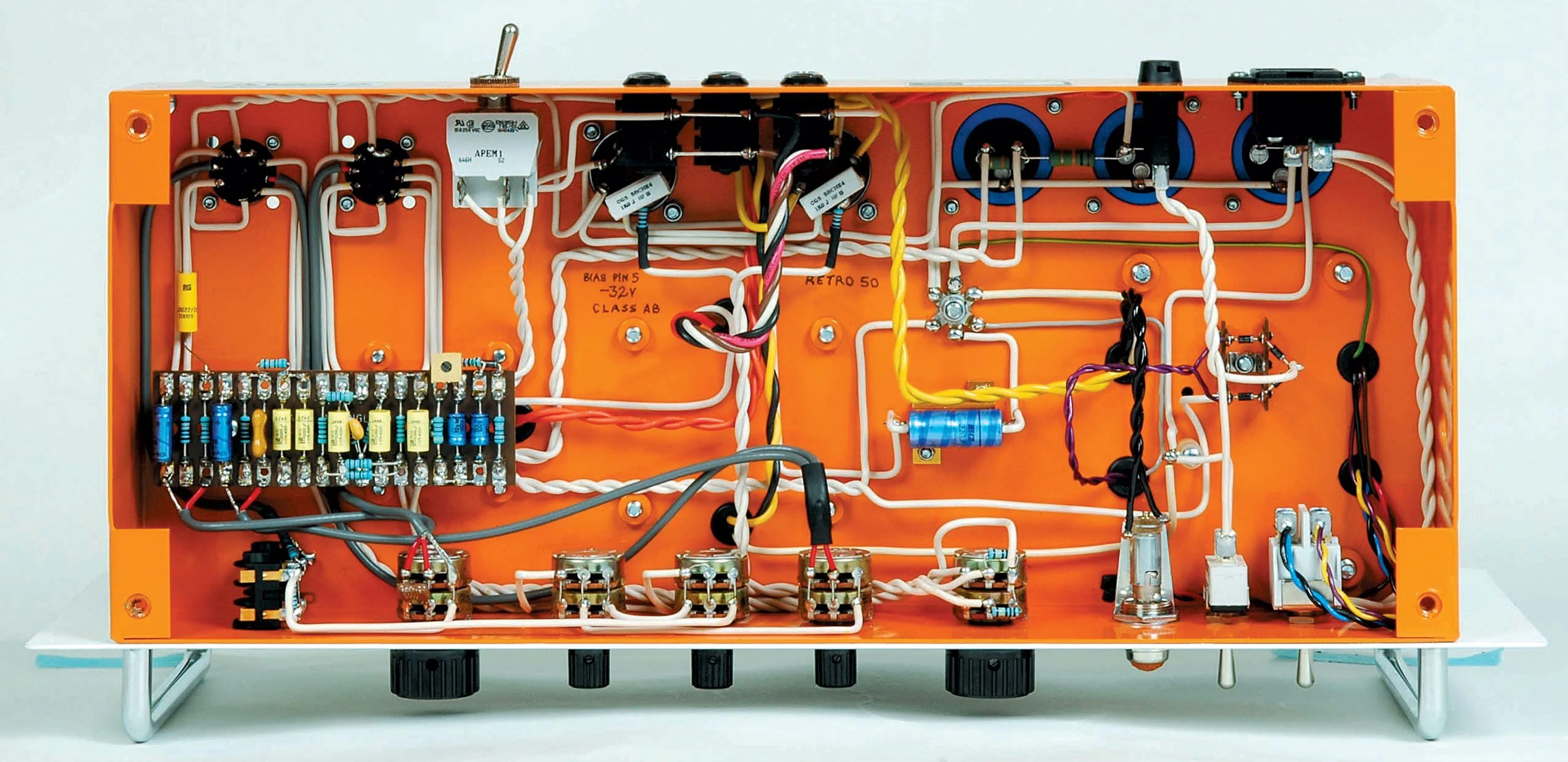
Dialing it in: Thick and Heavy Amp Settings
In Doom Metal, the amp plays a crucial role in shaping the overall sound. Tube amps are often favored for their warm, rich tones and natural distortion, but in doom, it's some of the most popular amps are solid states. Marshall, Sunn, Orange, and Laney amps are popular choices among Doom Metal guitarists for their ability to deliver a thick, heavy sound.
If you're in search of a great amp for doom metal, a common and affordable option is the Orange Super Crush 100. EQ is going to vary based on the amp you're using, but generally pushing more bass frequencies is advisable. It's common to scoop the mids a tad (not quite as much as other metal genres) but while this sounds good playing alone, you'll need to bring the mids back up to cut through in a band mix.
Typically, doom metal requires a high level of gain to achieve its signature heavy, distortion. Try setting your gain around 8. This should give you a good amount of distortion without losing the definition of your notes. Alternatively, and especially if you're using some of the pedals below, you can run your amp as a clean pedal platform.
Remember, these are just starting points. Every guitar, amplifier, and pedal will respond differently, so don't be afraid to tweak these settings to suit your gear and your personal taste. The key is to experiment until you find the sound that's right for you.
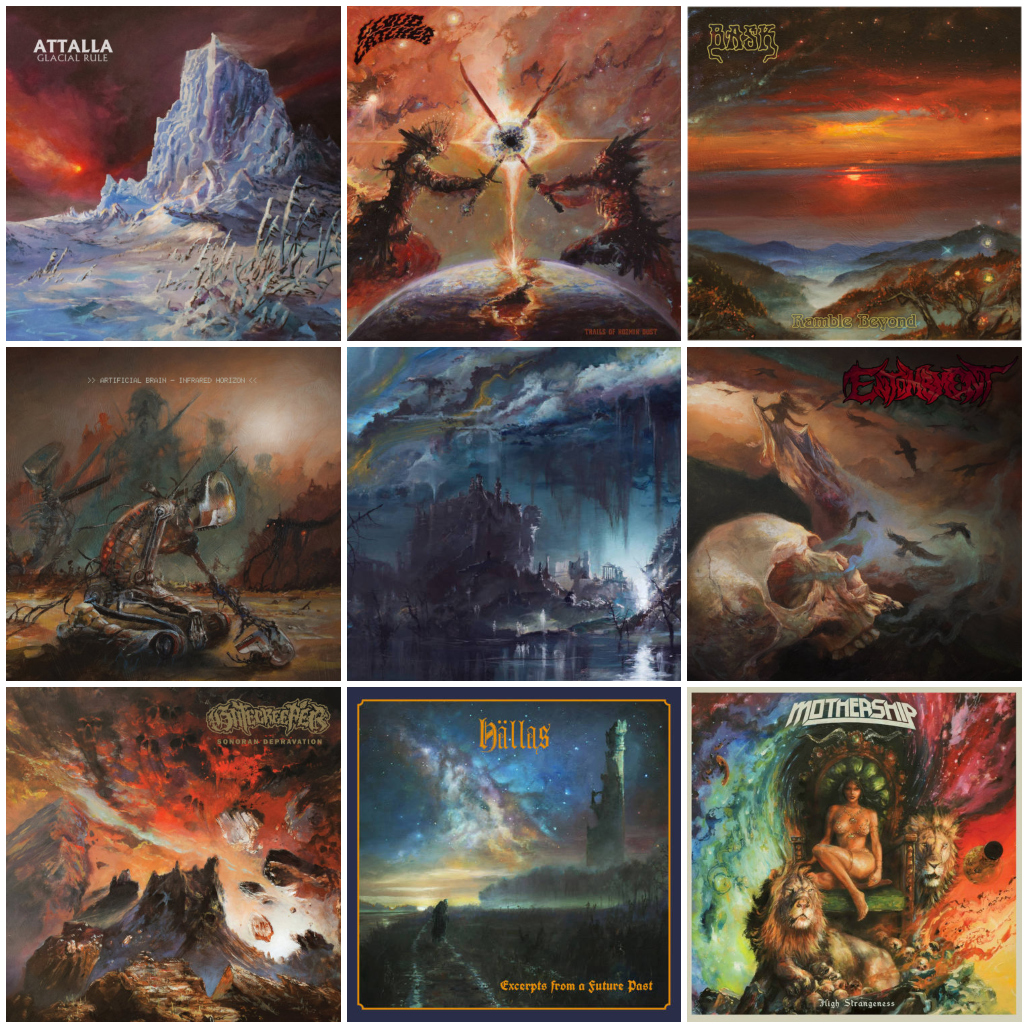
The Many Faces of Doom: Subcategories, Related Genres, and Inspiration
Doom Metal itself is a broad genre with various subcategories, each with its own distinctive sound and feel. Traditional Doom, for example, often features a cleaner, more classic rock approach, while Funeral Doom goes for an extremely heavy, distorted walls of sound to create a slow, mournful approach to metal. Stoner Doom, on the other hand, is known for its fuzzy, psychedelic tone. Understanding these subcategories can help you refine your gear and playing based on the specific style of Doom Metal you're aiming for.
Here's a full list of subcategories with brief descriptions and examples:
- Traditional Doom: Classic rock-inspired with cleaner distortion. Example: Pentagram, "Relentless"
- Funeral Doom: Extremely heavy, slow, and mournful. Example: Skepticism, "Stormcrowfleet"
- Stoner Doom: Fuzzy and psychedelic with a heavy emphasis on riff-driven structures. Example: Sleep, "Dopesmoker"
- Sludge Doom: Combines the slow tempos of doom metal with the aggression of hardcore punk. Example: Crowbar, "Odd Fellows Rest"
- Drone Doom: Minimalistic, with long, sustained notes and heavy distortion. Example: Sunn O))), "Monoliths & Dimensions"
- Epic Doom: Incorporates clean vocals and melodic elements, often with fantasy-themed lyrics. Example: Candlemass, "Epicus Doomicus Metallicus"
- Death/Doom: Combines the slow tempos of doom metal with the growling vocals and double-kick drumming of death metal. Example: My Dying Bride, "Turn Loose the Swans"
- Black/Doom: Fuses the slow tempos and heaviness of doom metal with the raw atmosphere of black metal. Example: Forgotten Tomb, "Songs to Leave"
- Gothic Doom: Incorporates gothic elements like dark, romantic, and melancholic atmospheres with clean vocals. Example: Paradise Lost, "Draconian Times"
For inspiration, you should also listen to the pioneers of the genre. Many guitarists consider Black Sabbath's debut album a masterclass in Doom Metal, with Tony Iommi's heavy, distorted guitar setting the standard for the genre. Another more recent example is "Dopethrone" from Electric Wizard, which showcases the power and depth that can be achieved with the right combination of gear and technique. I've also personally found Windhand to be an excellent source of inspiration.
Now that we've explored the various subgenres of Doom Metal and the importance of amp settings, it's time to delve into the heart of the Doom Metal: the fuzz pedal. This essential piece of gear is what gives Doom Metal its signature heavy distortion. Whether you're on a budget or looking to splurge on a boutique model, there's a fuzz pedal out there perfect for you.
Doom on a Budget: Affordable Fuzz Pedals
When it comes to crafting your perfect Doom Metal pedal board, you don't necessarily need to break the bank. There are several budget-friendly fuzz pedals that deliver fantastic sound quality. Each pedal we're looking at here costs $50 or less (at the time of writing). Let's take a closer look:
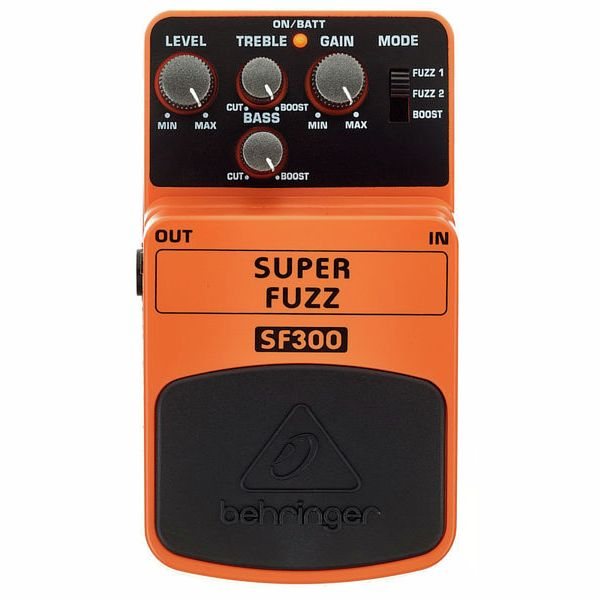
Behringer SF300 Super Fuzz Pedal
This pedal is a clone of the legendary Boss FZ-2 Hyper Fuzz, a pedal that has been a staple in the rigs of many Doom Metal guitarists. The SF300 offers three different modes: Fuzz 1, Fuzz 2, and Boost. Each mode provides a unique tonal character, giving you a range of possibilities from a smooth, vintage fuzz to a more aggressive, modern tone.
Despite its budget-friendly price, the SF300 is capable of delivering a rich, heavy sound that's perfect for Doom Metal. But what about its durability? The SF300 is made of plastic, which might initially raise some eyebrows. However, many users have reported that the pedal is quite sturdy and reliable despite its plastic construction. It seems to hold up well under regular use, and we couldn't find any instances of the pedal breaking online.
In fact, quite to the contrary, we found a pretty crazy torture test of the pedal by the YouTube channel "The Tone Mob":
As far as controls go, you may want to start with the Fuzz 1 mode, then set the level to the desired volume and run high gain for a heavy distorted sound.
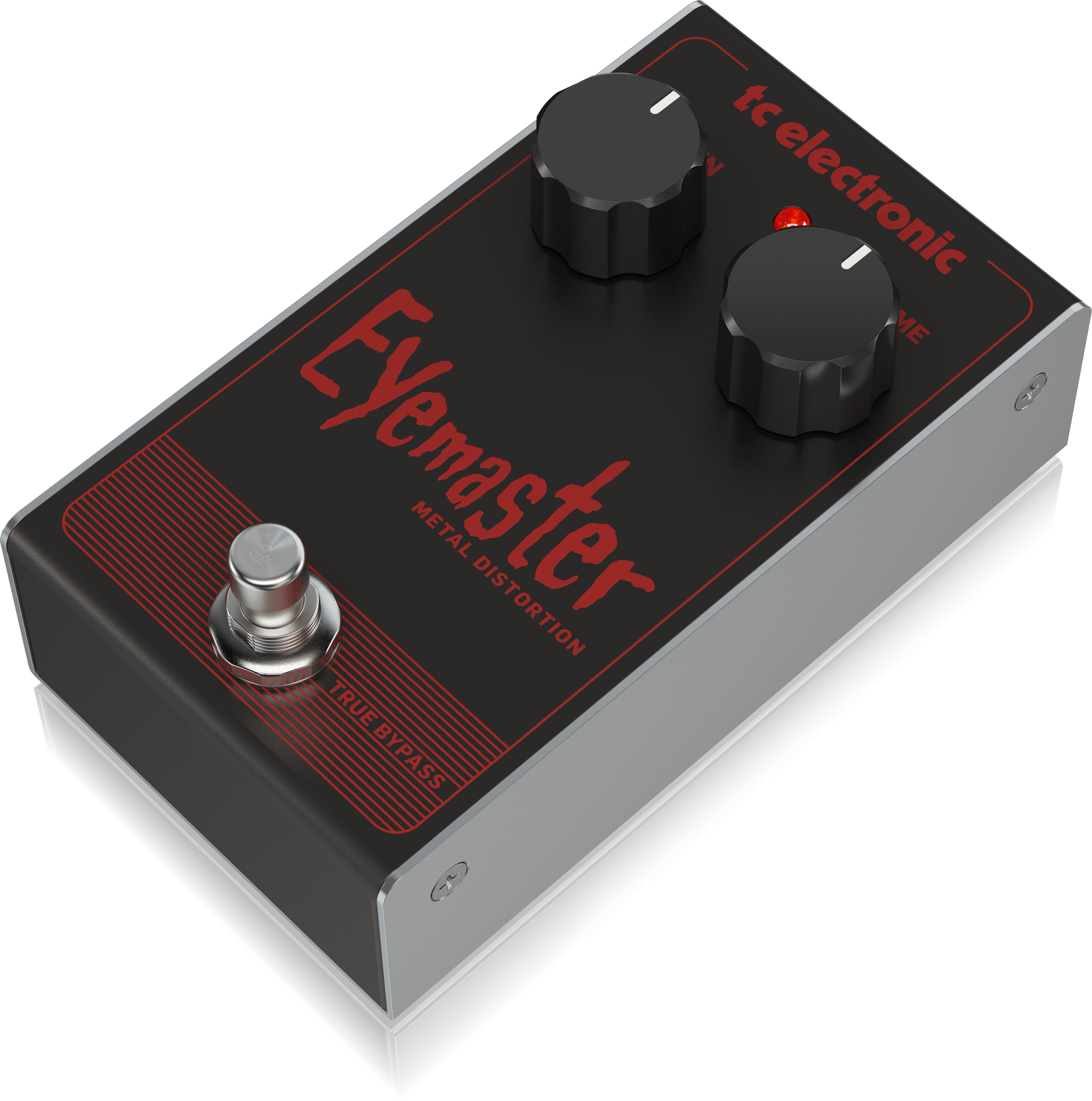
TC Electronic Eye Master
Inspired by the Swedish Death Metal scene, the Eye Master is more than capable of delivering the heavy, distorted tones required for Doom Metal. Its simple two-knob design makes it easy to dial in your sound, but don't let its simplicity fool you. The Eye Master can deliver a massive, distorted tone that's perfect for heavy riffs. Whether you're playing slow, crushing riffs or faster, more aggressive sections, the Eye Master has you covered.
As far as settings go, we'll take a line straight off of TC Electronic's website: "Just set the volume (all the way up, right?) and adjust the gain (anything less than all-the-gain is sacrilege) and start riffing."
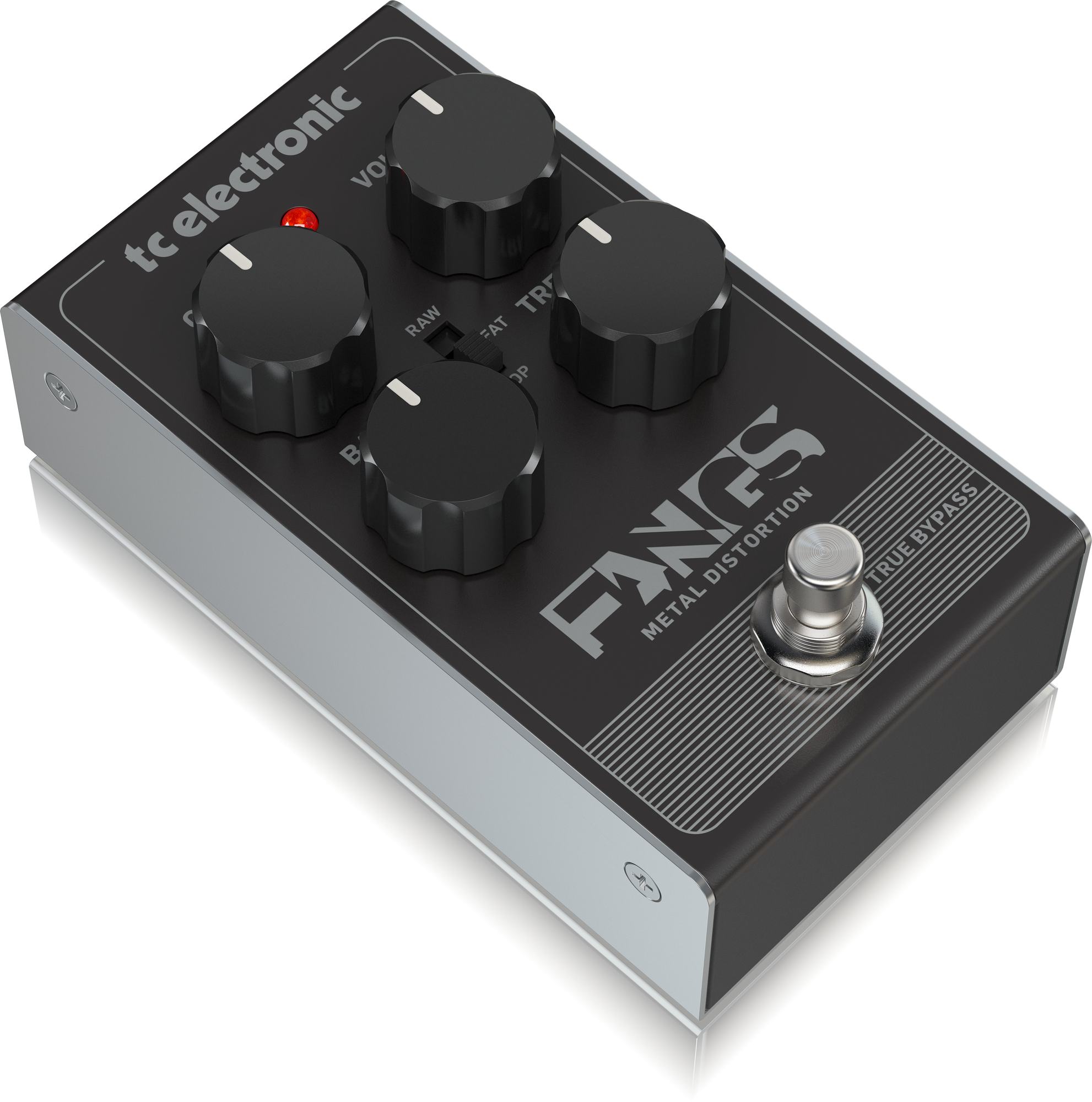
TC Electronic Fangs
Another pedal in TC Electronic's affordable line, the Fangs is a versatile fuzz/distortion pedal that offers a wide range of distorted tones. From a light, fuzzy overdrive to a heavy, doom-laden distortion, the Fangs can do it all. Its three-way toggle switch lets you choose between different clipping modes, adding even more tonal variety. The Fangs is not only affordable but also compact, making it a great choice for guitarists with limited pedalboard space.
It has a bit more flexibility than the previously mentioned pedals on our list, with a three-way toggle switch for different clipping modes. For Doom Metal, you might want to try the "Raw" setting for a heavy, unfiltered distortion. Set the volume and gain high for a thick, saturated sound, and adjust the tone to bring out the low frequencies.
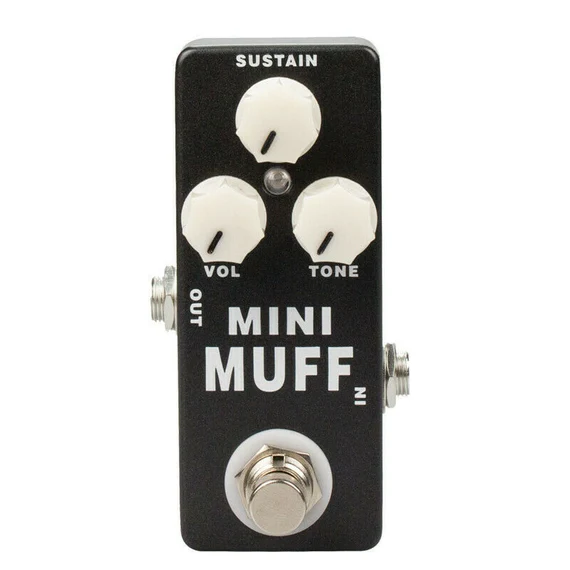
Mosky MINI MUFF
This pedal is a clone of the Big Muff Pi, known for its rich, creamy fuzz. It's regularly available on Amazon and eBay for around $30 and features a smaller form factor than a Big Muff while nailing the sound.
For Doom Metal, you might want to set the sustain high for a heavy, sustained tone. The tone control on the MINI MUFF is a bit unique: turning it clockwise increases the amount of high frequencies and decreases the amount of low frequencies, and vice versa. For Doom Metal, you might want to turn the control counterclockwise to emphasize the low end.
Tried and True: Most Common Fuzzes
When it comes to crafting the quintessential doom metal tone, certain pedals have earned their place in the pantheon of essential gear. These are the pedals that you'll frequently find on the pedalboards of seasoned doom metal guitarists, offering a balance between quality, versatility, and accessibility. In this section, we'll delve into some of the most popular and widely-used fuzz pedals, exploring their unique characteristics and how they contribute to the heavy, distorted sound that defines the genre.
The pedals we'll be discussing include the iconic Big Muff, known for its massive, fuzzy distortion; the Proco Rat, celebrated for its wide range of tones; the EQD Acapulco Gold v2, designed to emulate the sound of a cranked vintage tube amp; the EQD Hoof Reaper, a three in one pedal with a built-in octave up effect; the DOD Carcosa, a versatile fuzz pedal that can produce a wide range of tones; and the EQD Hizumitas, another pedal designed to emulate a cranked vintage tube amp.
Each of these pedals brings something unique to the table, and understanding their individual characteristics can help you choose the right one for your doom metal sound. Let's dive in and explore each one in more detail.
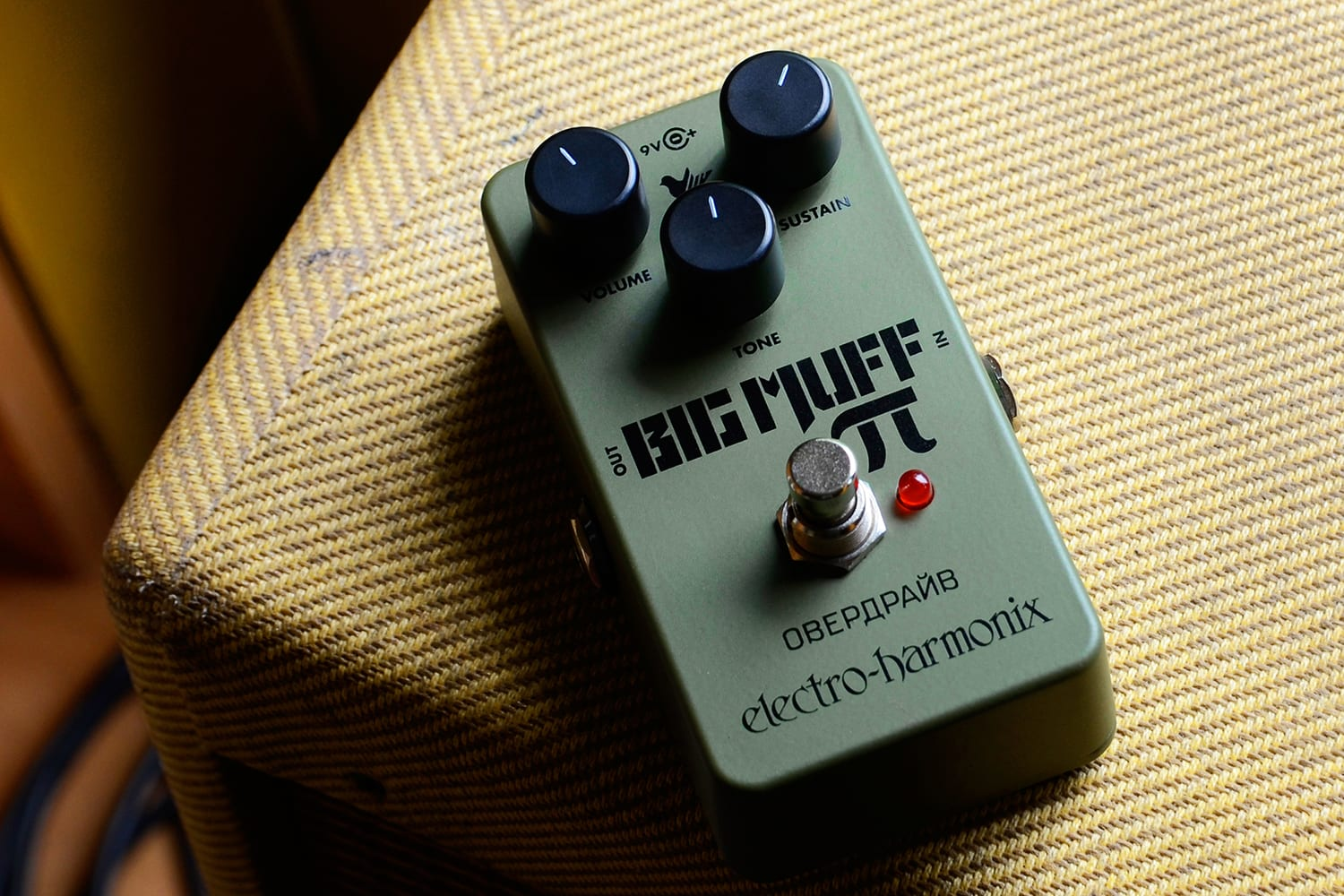
The Big Muff (and its Countless Variants)
The Big Muff is a legendary line of pedals that have been a staple in the world of rock and metal for decades. Known for rich, creamy fuzz and massive sustain, Big Muffs have been used by countless artists across various genres, including many doom metal guitarists.
One of the unique aspects of the Big Muff is that it comes in several different versions, each with its own distinctive sound.
The NYC Big Muff is the standard version that most people are familiar with. It delivers the classic Big Muff sound with a big, heavy fuzz and a significant amount of sustain.
The Triangle Big Muff, named for the layout of its knobs, was the original version of the pedal. It's known for its smooth, violin-like sustain and slightly less aggressive fuzz compared to later versions.
The Ram's Head Big Muff, named for the small ram's head symbol on its face, is known for its slightly scooped mids, making it a bit clearer and less muddy than other versions.
The Russian Big Muff, which comes in several versions itself (including the Black Russian and the Green Russian), is often recommended. It's known for its darker, smoother tone with less grit and more low-end compared to the NYC Big Muff. This makes it perfect for the heavy, downtuned riffs that are characteristic of doom metal.
The best version for you will depend on your specific gear and personal preferences. Don't be afraid to experiment with different versions and even clones and derivatives to find the one that fits you the best.
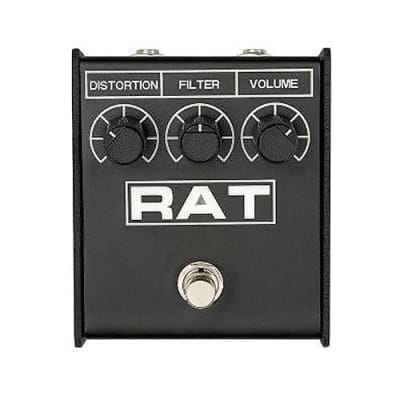
Proco Rat
I'm cheating a little bit by including this on the list as technically the RAT isn't a fuzz, but it can definitely get into the territory when you really push the gain.
One of the standout features of the Rat is its filter control, which works in reverse compared to the tone controls on most other pedals. Instead of adding treble when turned clockwise, the filter knob on the Rat reduces high frequencies, allowing you to dial in a darker, heavier tone.
When setting up the Rat, you might want to start with the distortion set fairly high to achieve a heavy, saturated tone. The filter can be adjusted to taste, but a lower setting (turned more clockwise) will give you a darker, more doom-laden sound. The volume can be set to match the level of your clean tone or adjusted for a boost.
Here's a suggested starting point:
- Distortion: Set to around 3 o'clock for a heavy, saturated tone, lower gain levels start to act as a distortion and then overdrive.
- Filter: Adjust to taste. There's really no rule of thumb here, I run mine at around 11 o'clock.
- Volume: I prefer to push my volume up a bit higher than unity gain. One of the peculiarities of the RAT circuit is that volume affects the EQ. I'm usually somewhere between 1:30 and 3 o'clock.
Remember, these are just starting points, and the best settings will depend on your specific gear and personal preferences. Don't be afraid to experiment with different settings to find your perfect doom metal tone.
One thing to add is that the RAT can make an excellent EQ shaping tool and additional gain stage when stacking pedals. In particular the RAT + Muff combo is one of the best pedal combinations I've ever tried, capable of delivering punishing walls of sound and thick, just tight enough, chugs. I highly recommend trying some form of RAT into a muff, you won't be disappointed.
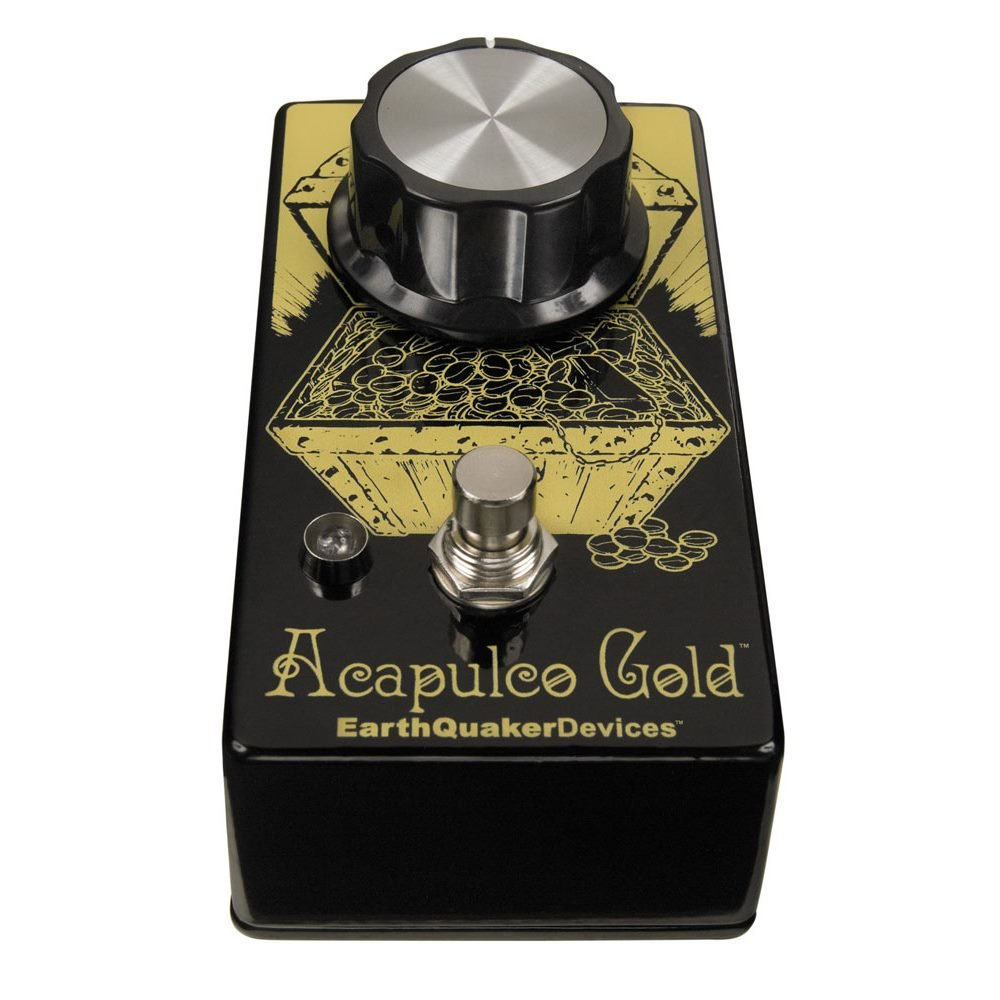
EarthQuaker Devices Acapulco Gold V2 Distortion Pedal
The EQD Acapulco Gold V2 is a unique beast. Often referred to as a one knob fuzz, this pedal is designed to emulate the sound of a cranked vintage tube amp.
The single volume knob on the pedal controls the output level, but the real magic happens with your guitar's volume knob. By adjusting your guitar's volume, you can go from a light, gritty overdrive to a heavy, saturated distortion, all while maintaining the character of your guitar's tone.
You may worry that the lack of a tone knob would be limiting, but the Acapulco Gold V2 proves that this isn't the case. Despite its simplicity, its capable of delivering a wide range of tones, from bright and cutting to dark and heavy. The key is to use your guitar's tone knob to shape the sound. By rolling off the tone on your guitar, you can achieve a darker, doomier sound.
The pedal is certainly one of the most unique I've tried, but in the end it didn't stay on my board. I found it to be too noisy in particular, and prefer the added flexibility I can get through stacking a fuzz and distortion/overdrive together.
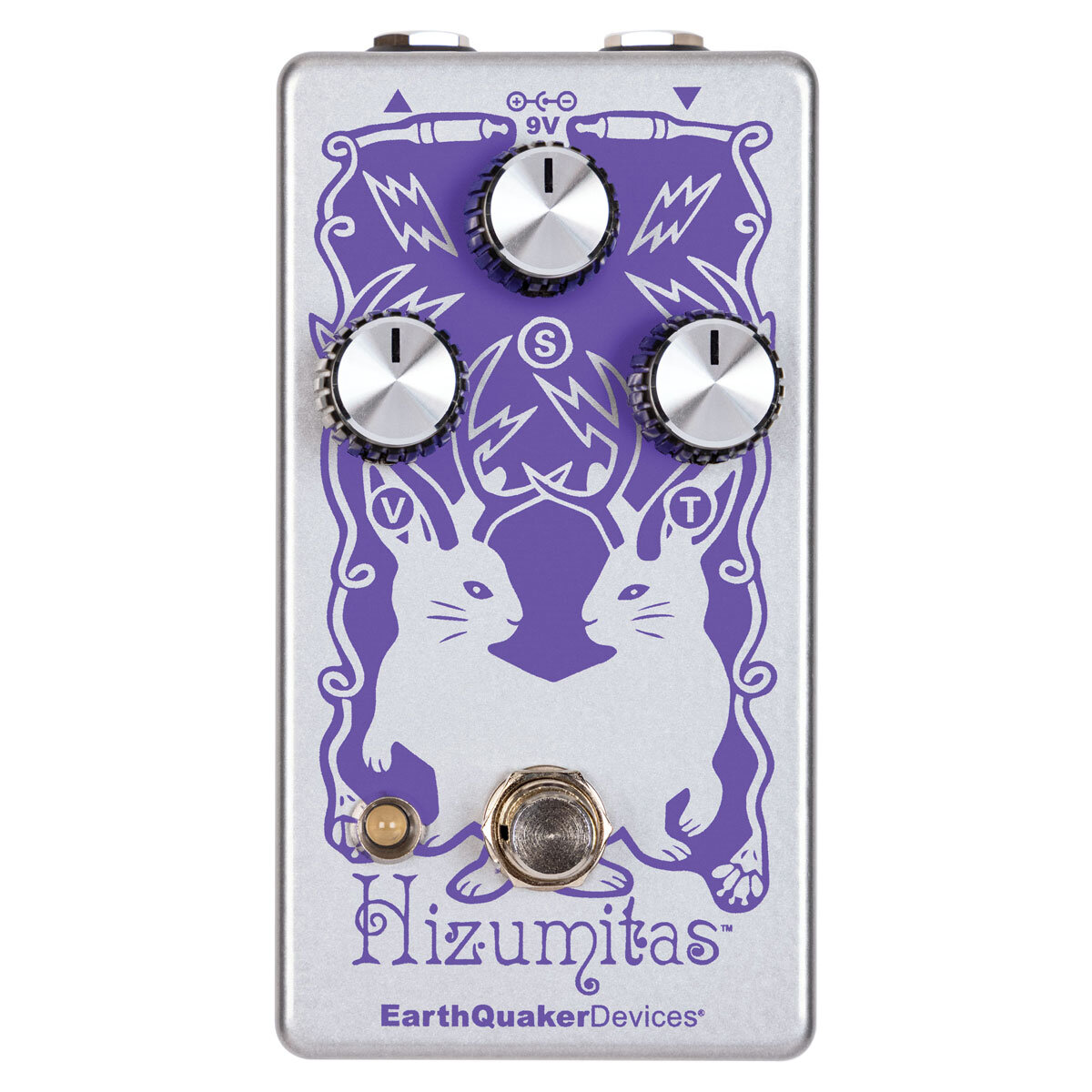
EarthQuaker Devices Hizumitas
The EQD Hizumitas is a unique fuzz pedal that's designed to capture the signature sound of Wata from the Japanese band Boris. Known for her heavy, fuzzy tone, Wata's sound has been meticulously distilled into this pedal, making it a fantastic choice.
The volume knob sets the output level, the sustain knob adjusts the amount of fuzz, and the tone knob allows you to shape the pedal's EQ.
The Hizumitas is known for its darker, heavier sound, which is perfect for the low-tuned, slow-tempo riffs that characterize doom metal. Despite its heavier nature, the pedal is surprisingly versatile. By adjusting the sustain and tone knobs, you can dial in everything from a light, gritty overdrive to a heavy, saturated fuzz.
You might worry that the lack of a mid control would be limiting, but the Hizumitas proves that this isn't the case. The tone knob allows you to shape the sound to your liking.
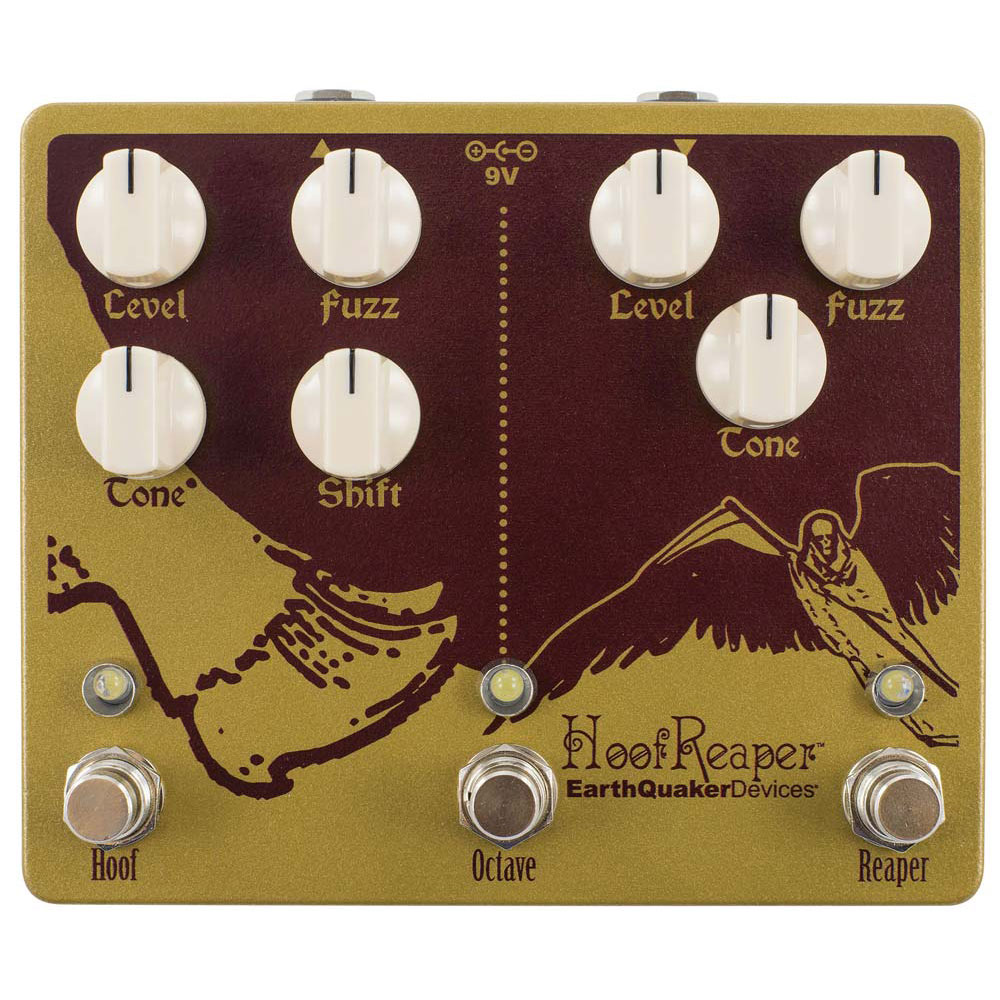
EarthQuaker Devices Hoof Reaper
The EQD Hoof Reaper is a premium fuzz pedal that combines two of EarthQuaker Devices' most popular pedals, the Hoof and the Tone Reaper, with an added octave up effect. This makes it one of the most versatile doom pedals on the market, capable of delivering a wide range of tones.
The Hoof side of the pedal is based on the classic green Russian Big Muff, known for its smooth, creamy fuzz and deep low end. The Tone Reaper side is a vintage-style fuzz that's designed to capture the raw, gritty tone of a classic 60s fuzz. The added octave up effect can be used with either side or both, adding a high, piercing tone that can cut through the mix.
One thing to note about the Hoof Reaper is its price. At $299, it's one of the more expensive pedals on our list. However, considering that you're essentially getting three pedals in one, many guitarists find it to be a worthwhile investment.
As for the settings, the Hoof Reaper offers a lot of flexibility. Each side of the pedal has its own set of controls, allowing you to dial in a wide range of tones. For a typical doom metal sound, you might want to set the fuzz controls high for a heavy, saturated tone and adjust the tone controls to bring out the low end. The octave up effect can be used sparingly to add a bit of edge to your sound.
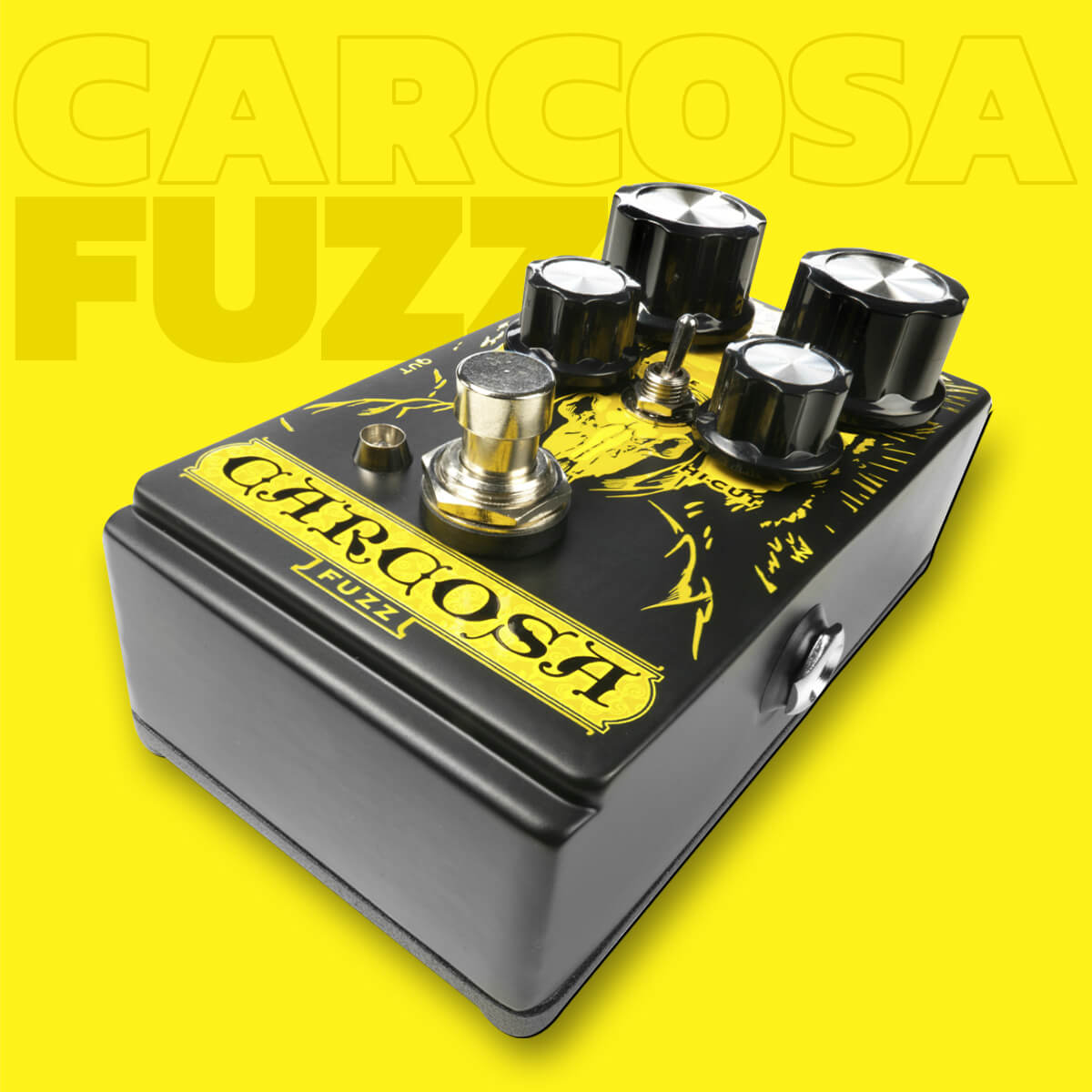
DOD Carcosa
The DOD Carcosa is a versatile fuzz pedal that's known for its wide range of tones. From a light, gritty fuzz to a heavy, saturated distortion, the Carcosa can cover a lot of ground, making it a killer choice for doom metal.
The Carcosa features two modes, Hali and Demhe, which offer different clipping options. The Hali mode provides a more open, less compressed sound, while the Demhe mode offers a tighter, more compressed tone. This allows you to switch between a more vintage-style fuzz and a modern, high-gain fuzz, depending on your needs.
The Carcosa also features the following knobs:
-
Before (gain)
- Controls the amount of fuzz
-
After (output volume)
- Sets the output volume
-
Hi-Cut
- Enables you to roll off high frequencies
-
Output
- Adjusts the overall volume of the pedal
For a typical doom metal sound, you might want to set the Before and After controls high for a heavy, saturated tone. The Hi-Cut control can be adjusted to taste, but a lower setting can help to emphasize the low-end frequencies.

Luxuriously Thick tone: Boutique Pedals
As we venture into the realm of boutique fuzz pedals, we're exploring a world where craftsmanship, innovation, and exclusivity reign. Boutique pedals are often the product of small-scale manufacturers who pour their heart and soul into every pedal they create. These pedals are not always more expensive than their mass-produced counterparts, but they often offer unique features, distinctive tones, and a level of quality that's hard to find elsewhere.
However, the boutique tag comes with a few considerations. These pedals can be harder to get your hands on, especially in the used market. Speaking of the used market, the pedals can be slower to sell in case you find they don't work for your specific tone, as fewer guitarists are aware of them. Many boutique manufacturers build their pedals to order, which can mean longer lead times. But for many guitarists, the wait is well worth it.
In this section, we'll be discussing a few select pedals that we know of personally. However, it's worth noting that the world of boutique pedals is vast and ever-growing. There are countless boutique builders out there crafting incredible pedals, so if a pedal isn't on this list, that doesn't mean it's not a great choice.
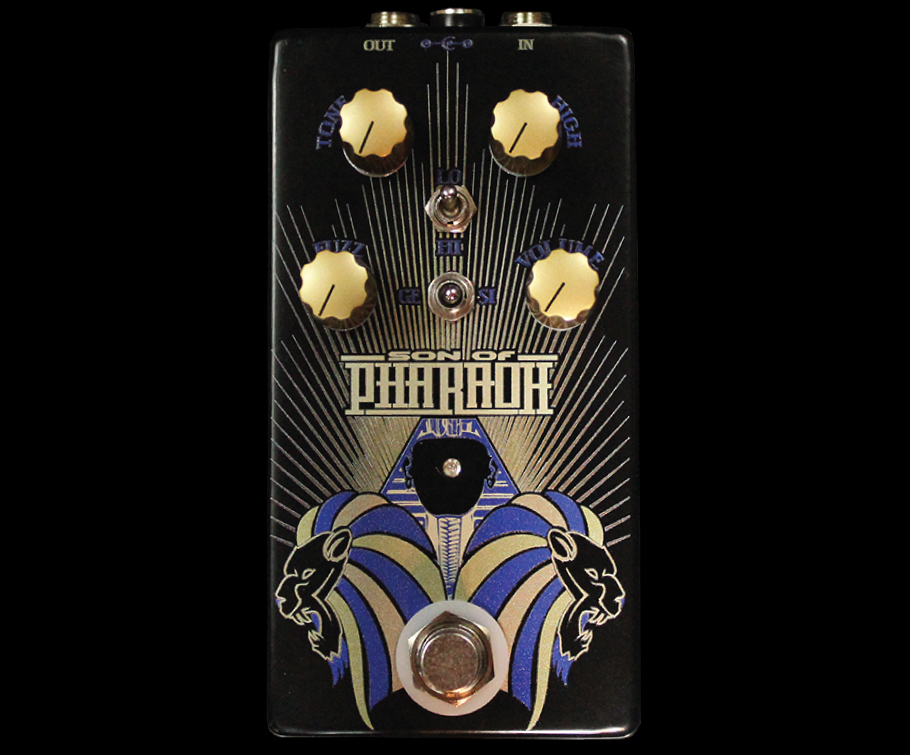
Black Arts Toneworks Son of Pharaoh
Black Arts Toneworks makes a number of pedals that work well for doom pedalboards, but for the purpose of our list we'll focus on the Son of Pharaoh. Son of Pharaoh is a compact fuzz pedal that packs the same punch as its larger counterpart, the Pharaoh. In fact, it features all the same parts and components as the original, just handwired into a smaller enclosure.
The Son of Pharaoh is known for its wide range of tonal possibilities. It can deliver everything from a clean boost to a light overdrive, all the way to a heavy, saturated fuzz. This makes it a versatile choice, capable of accommodating a variety of styles and preferences.
The pedal features a hi/lo input switch, similar to your favorite tube amp. The low setting offers more headroom and less clipping, while the high setting provides less headroom and more clipping. This allows you to switch between a more vintage-style fuzz and a modern, high-gain fuzz, depending on your needs.
The Son of Pharaoh also includes a standard fuzz knob, a full-range tone control, and a high-end compensation knob to replenish the highs cut by the tone control when boosting lows. This gives you a great deal of control over your sound, allowing you to dial in the perfect tone for your riffs.
The pedal also includes a diode selector switch that allows for different modes of clipping. You can choose from silicon diodes for a raspy distorted sound, diodes out for more volume and less clipping, or asymmetrical germanium clipping diodes for a warm, tube-like old school sound.
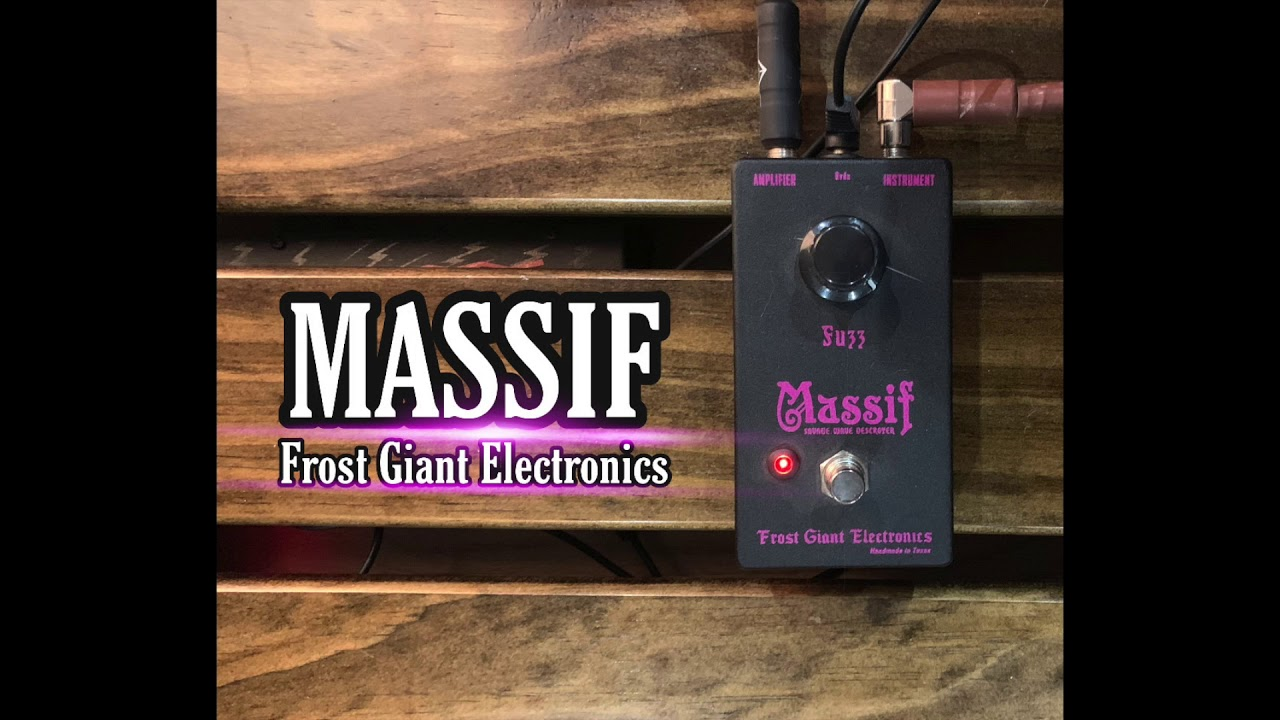
Frost Giant Electronics Massif
This pedal is Frost Giant's take on the Colorsound 1 Knob Fuzz, but with a unique twist that sets it apart. The Massif is designed to deliver a tone that's very mid-focused, with a distortion-like fuzz quality that's smooth and articulate, yet aggressive.
It's known for its punishing lows, making it a great choice. Despite its simplicity, the Massif offers a range of tones depending on where the single knob is set, so don't be fooled into thinking it has just one sound.
The Massif's single knob controls the volume, which Frost Giant describes as a "beats you in the face kinda tone." This simplicity makes it easy to dial in your sound, but also allows for a surprising amount of versatility. Whether you're looking for a light, gritty fuzz or a heavy, saturated tone, the Massif can deliver.
One thing to note about the Massif is that the pedal sounds best with a clean, not dirty amp setting. Some buffers, like those found in Boss pedals, can make the pedal sound brighter or react differently than without.
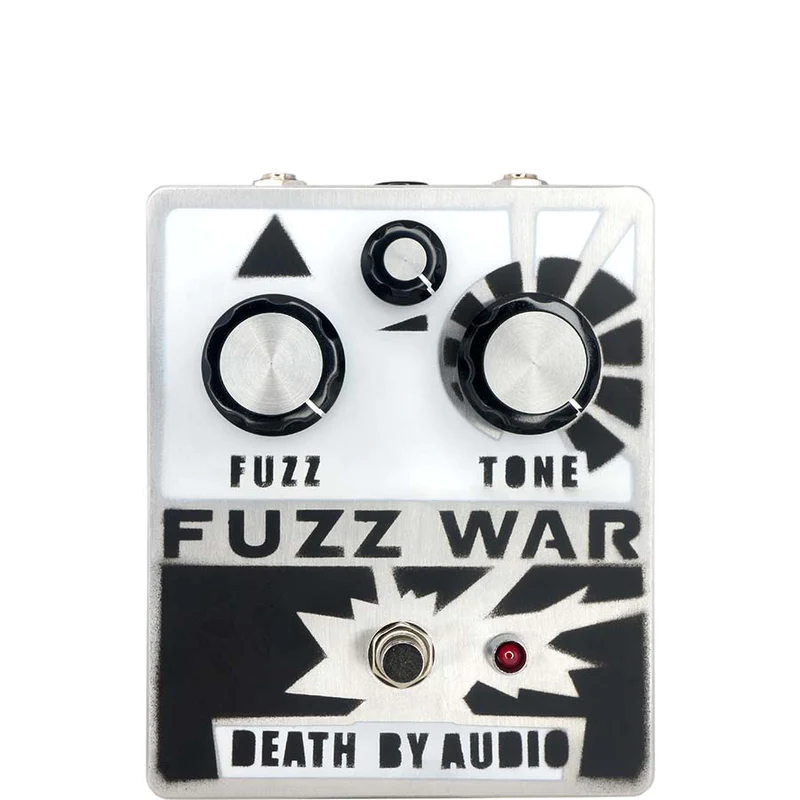
Death By Audio Fuzz War
The Death By Audio Fuzz War is a pedal that's been described as the "fuzz of all fuzzes." This pedal is designed to deliver an endless wall of fuzz, with a circuit that explodes into the meanest, nastiest, most insane distortion, making you the ruler of the fuzz universe.
The Fuzz War features three knobs that control volume, fuzz, and tone. The volume knob controls the overall output level, while the fuzz knob controls the gain of the fuzz circuit. At its lowest setting, the pedal acts as a tone shifter, but as you turn the fuzz knob up, it sweeps from a booster to an overdrive to a thick distortion to a full-on blown-out war of fuzz. The tone knob is a specially designed multi-curve shaping filter which changes the timbre of the pedal from super deep bass sludge to screaming highs.
The Fuzz War is a versatile pedal that can deliver a multitude of tones, from light, gritty fuzz to heavy, saturated distortion. It's a great choice with its ability to deliver a thick, sustaining fuzz sound.
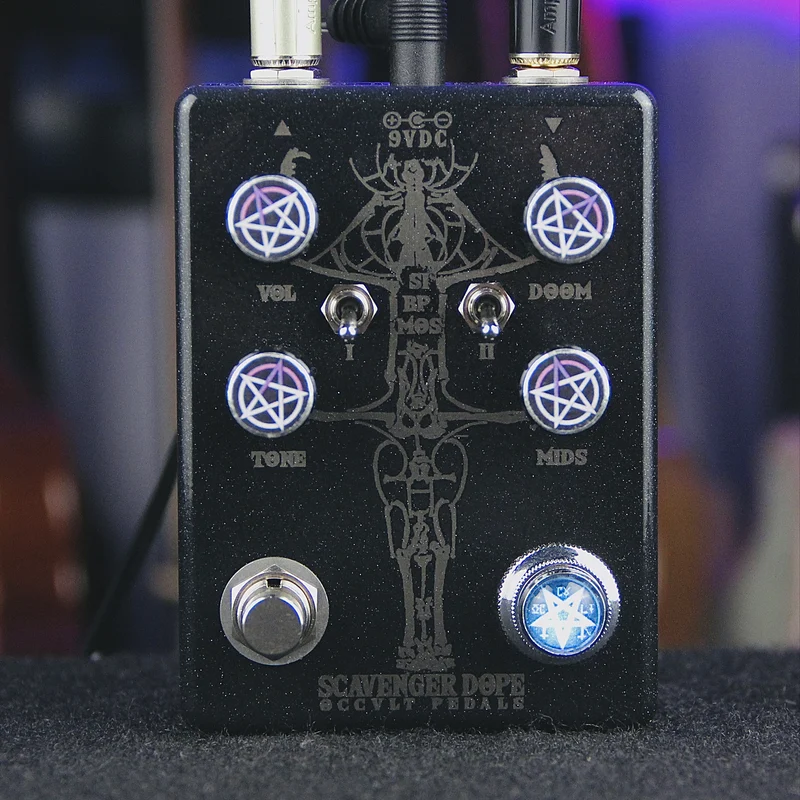
Occvlt Pedals Scavenger Dope
The Occvlt Pedals Scavenger Dope is designed to elevate your heavy, doomy riffing to new heights. It offers super flexible tone control, nine available clipping configurations, and a massive amount of gain on a tap.
At the heart of the Scavenger Dope Fuzz lies its remarkable tone control, providing a wide range of tonal possibilities. The tone knob’s versatility allows you to explore a spectrum of sounds, from dark and immersive tones with a massive low-end presence to bright and piercing fuzz that cuts through the mix effortlessly. Additionally, the pedal features an additional mids knob, enabling you to shape the overall tone with options ranging from heavy scoop to mids boost.
One of the key highlights of the Scavenger Dope fuzz is its remarkable versatility, courtesy of nine available clipping configurations. Equipped with two switches, this pedal allows you to choose between various clipping options. Whether you prefer the distinctive character of silicon diodes, the harmonically rich mosfet clipping, or even a massive volume boost to hit your amp harder, the Scavenger Dope fuzz has got you covered.
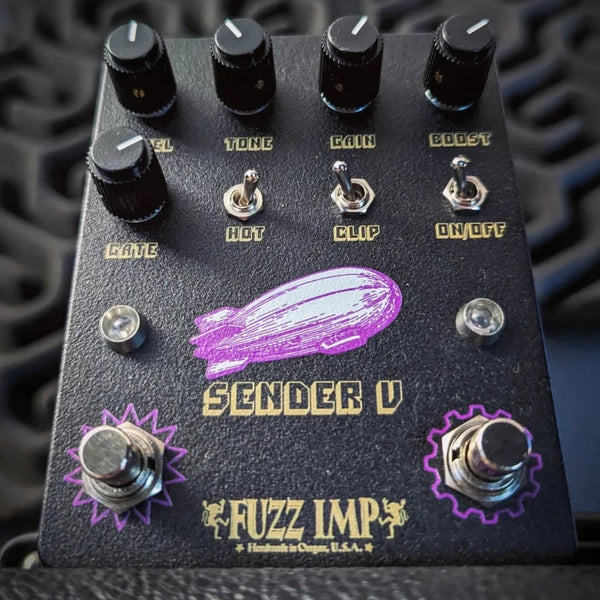
Fuzz Imp Sender V
Recently, I've been messing with a couple of pedals from Fuzz Imp including the precursor the the Sender V, the Sender v3. While my experience is with the earlier variant, I can speak to the uniqueness of this pedal.
It can be tempting to look at pedals that are inspired by existing circuits as all the same, and in a lot of cases that's true. Many builders merely clone the pedals with a few small tweaks, resulting in a sound that's similar to the original but with a slight twist.
That isn't the case with Fuzz Imp's Sender V. While you can hear the muff DNA inside, this pedals tone is unique so far as all the muff flavored fuzz pedals I've tried. Particularly, it's no clipping mode, (center on the 3-way toggle), enables the fuzz to have a mid forward, open sound with huge volume.
I've found that this pedal is one of my favorite stand alone fuzzes where with other fuzz pedals I prefer stacking them after a distortion or overdrive to bring some mids and attack back into the sound.
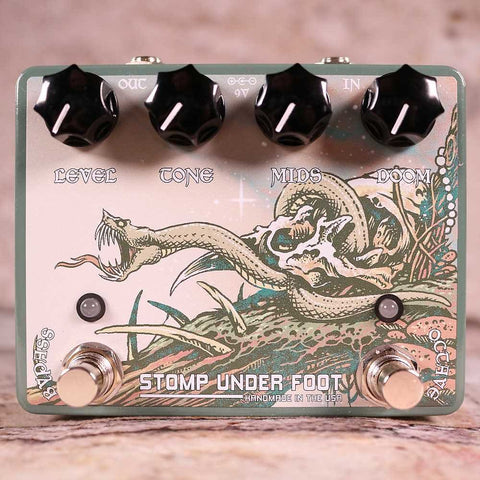
Stomp Under Foot Demogorgon V2/Deluxe
I'm constantly visiting my local guitar stores to find cool new used gear. Luckily for me, one of the original Demogorgons was in my Guitar Center, and when I tried it out I instantly fell in love.Conclusion
Finding the perfect fuzz pedal for your doom metal sound is a journey, and we hope this guide has offered some valuable insights to help you along the way. Whether you're just starting out with your first budget-friendly pedal or looking to invest in a boutique piece, remember that the best pedal is the one that inspires you to play and create.

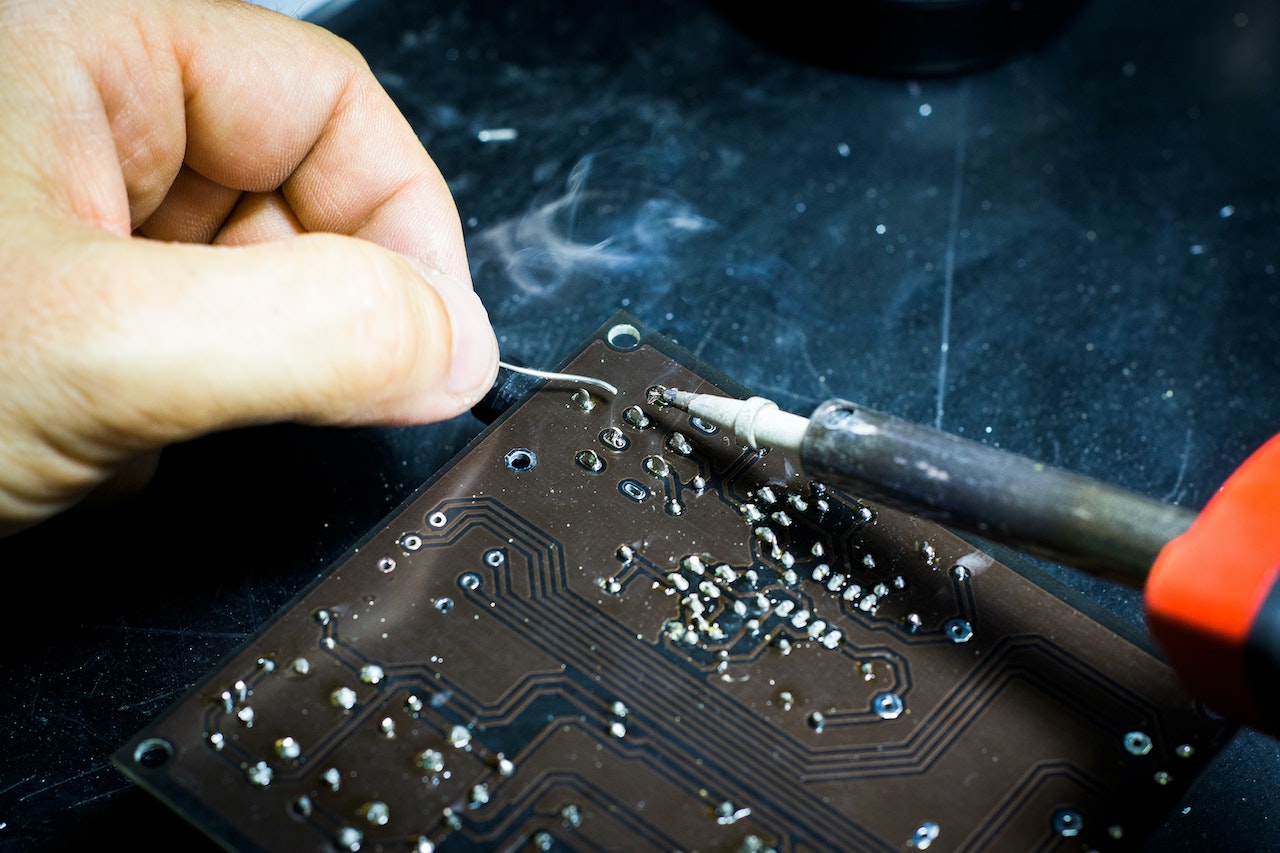
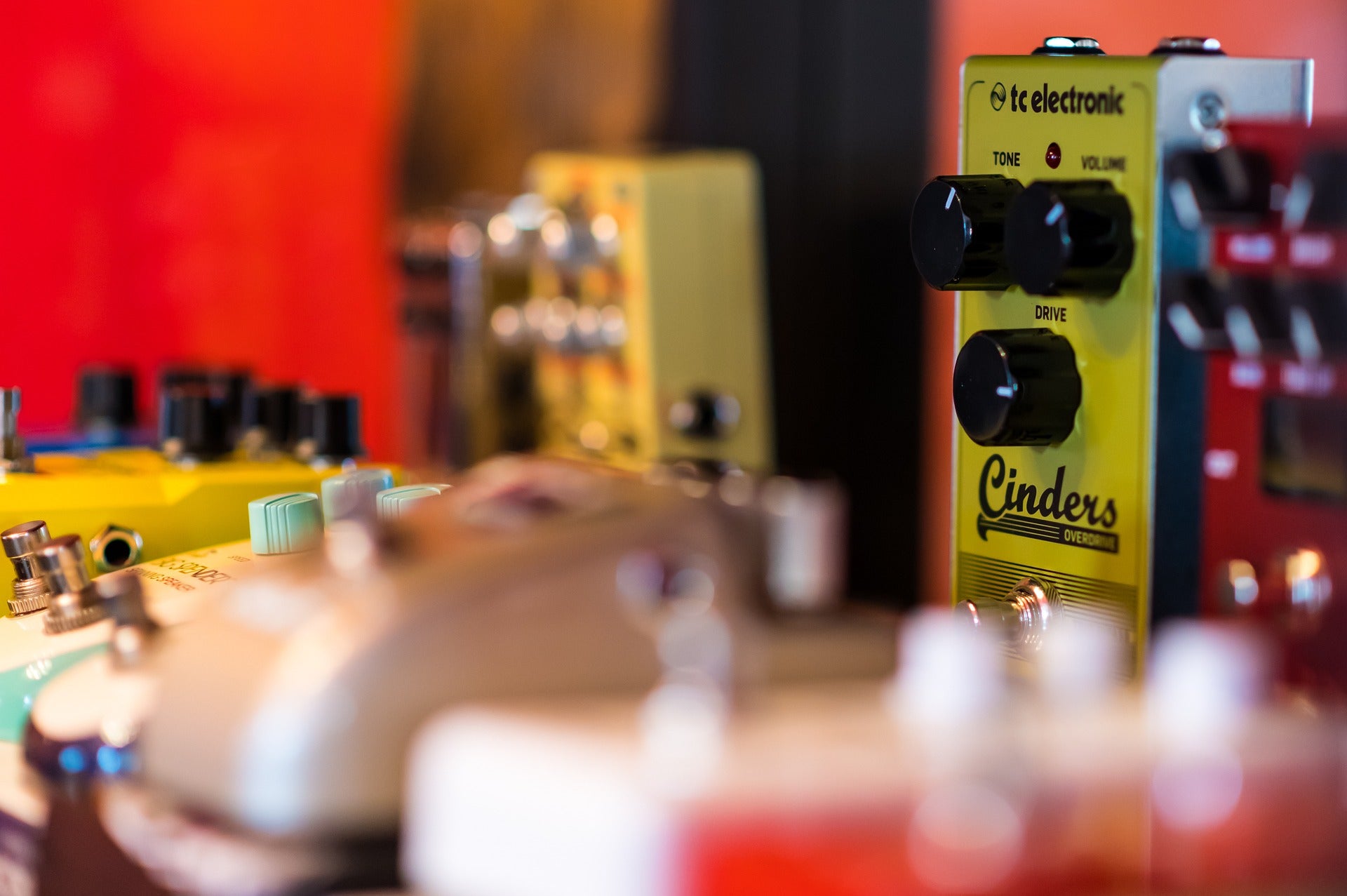
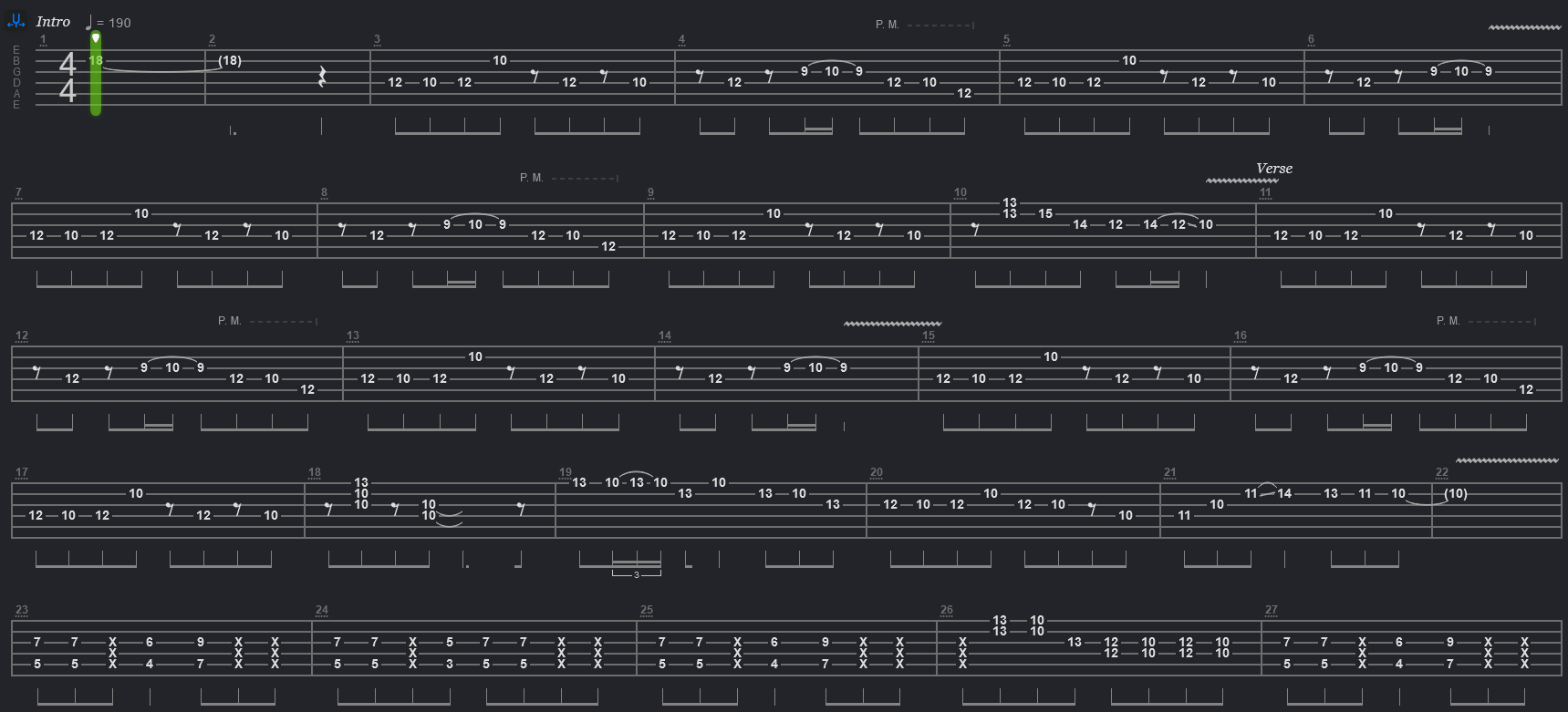
Leave a comment
All comments are moderated before being published.
This site is protected by hCaptcha and the hCaptcha Privacy Policy and Terms of Service apply.